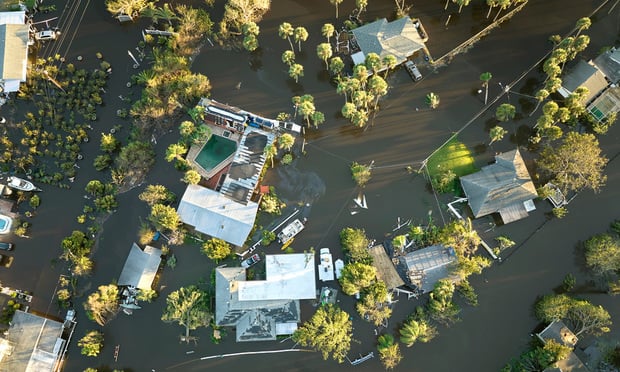While many anticipated and predicted that hurricanes would be the catastrophe story of 2007 — and indeed the hurricane season still has 32 more days to go — the recent wildfires and subsequent damage in Southern California have shown that catastrophes come in all different shapes and sizes, wreaking havoc on insurance companies as claims begin piling up.
According to a report from Guy Carpenter, the wildfires that began on Oct. 21, 2007 have devastated parts of Southern California, destroying more than 2,700 structures, including 2,013 homes. The report stated that officials estimate up to 950,000 people have been affected by the fires. San Diego has suffered the worst fire damage, with more than 1,500 homes destroyed. That's nearly three-quarters of the total number of homes destroyed by the blazes.
Three of the largest catastrophe modelers have released their figures for insured losses, and while they might not rival the $40+ billion price tag of Hurricane Katrina, they are certainly significant. AIR Worldwide estimates that insured losses could exceed $1.5 billion, while Risk Management Solutions (RMS) offered a wider margin of $900 million to $1.6 billion. Other media outlets have reported that the EQECAT modelers have reached similar conclusions, releasing estimates of between $1-$1.5 billion.
These are huge dollar figures, especially when compared to recent losses. Just two weeks ago, the Insurance Services Office reported that combined catastrophe claims for 2007's entire third quarter barely topped $1.13 billion. It seems certain that number will increase in the fourth quarter.
Additionally, RMS said that estimated insured losses from these wildfires would rank them among the costliest in Californian history, behind the Oakland Hills fires in 1991 and the Southern California fires in October 2003. They also reported that primary personal lines insurers and specialty writers for high-value properties are expected to incur most of the claims from these wildfires.
“In recent years there has been significant development in the wildlands that border urban areas, as people seek to live in a more natural environment,” said Don Windeler, director of model management for RMS, in a release. “As a result, more properties are at risk from brushfires, which pose a high hazard in these areas.”
Despite the high dollar figures being floated, Fitch Ratings said in a release that insured losses are expected to be within the level of losses anticipated by carriers when pricing catastrophe risk into premiums. Furthermore, they said that insurance companies that write the lines of business in California most affected by the wildfires are generally the larger, national carriers that, as a group, have high insurer financial strength ratings. The insurance lines of business most affected, according to Fitch, will be personal lines, automobile, and commercial lines, with the latter seeing significant claims in business interruption.
The California Department of Insurance (CDI) issued an emergency declaration that allowed non-CDI licensed adjusters — typically those adjusters from outside the state — to legally work claims in California. However, their work must be under the active direction, control, charge, or management of a CDI-licensed insurer or adjuster.
“I am issuing a declaration that will expedite additional insurance adjusters to California to assist survivors of the fire storms with the prompt processing of insurance claims resulting from this catastrophic event,” said California's Insurance Commissioner Steve Poizner, in a release. “For many, the first step on the road to recovery is to cut through the red tape and have their losses documented and processed for a claim. We want to remove any unnecessary delays to the system and make sure we have enough adjusters on the job.”
Many companies have already announced the dispatch of catastrophe teams. State Farm, the state's largest homeowners' insurer, reported that it had sent hundreds of adjusters to handle more than 2,000 claims it had already received. Liberty Mutual also responded by sending more than 75 adjusters and two mobile catastrophe response units to the scene. Independent catastrophe adjusters should expect to be utilized, as well. Farmers Insurance, meanwhile, has already reported more than 6,000 claims for its 400 on-site catastrophe adjusters to handle.
Interested in more catastrophe news and in-depth articles? Head over to Claims' catastrophe channel for more information.
Want to continue reading?
Become a Free PropertyCasualty360 Digital Reader
Your access to unlimited PropertyCasualty360 content isn’t changing.
Once you are an ALM digital member, you’ll receive:
- Breaking insurance news and analysis, on-site and via our newsletters and custom alerts
- Weekly Insurance Speak podcast featuring exclusive interviews with industry leaders
- Educational webcasts, white papers, and ebooks from industry thought leaders
- Critical converage of the employee benefits and financial advisory markets on our other ALM sites, BenefitsPRO and ThinkAdvisor
Already have an account? Sign In Now
© 2024 ALM Global, LLC, All Rights Reserved. Request academic re-use from www.copyright.com. All other uses, submit a request to [email protected]. For more information visit Asset & Logo Licensing.








